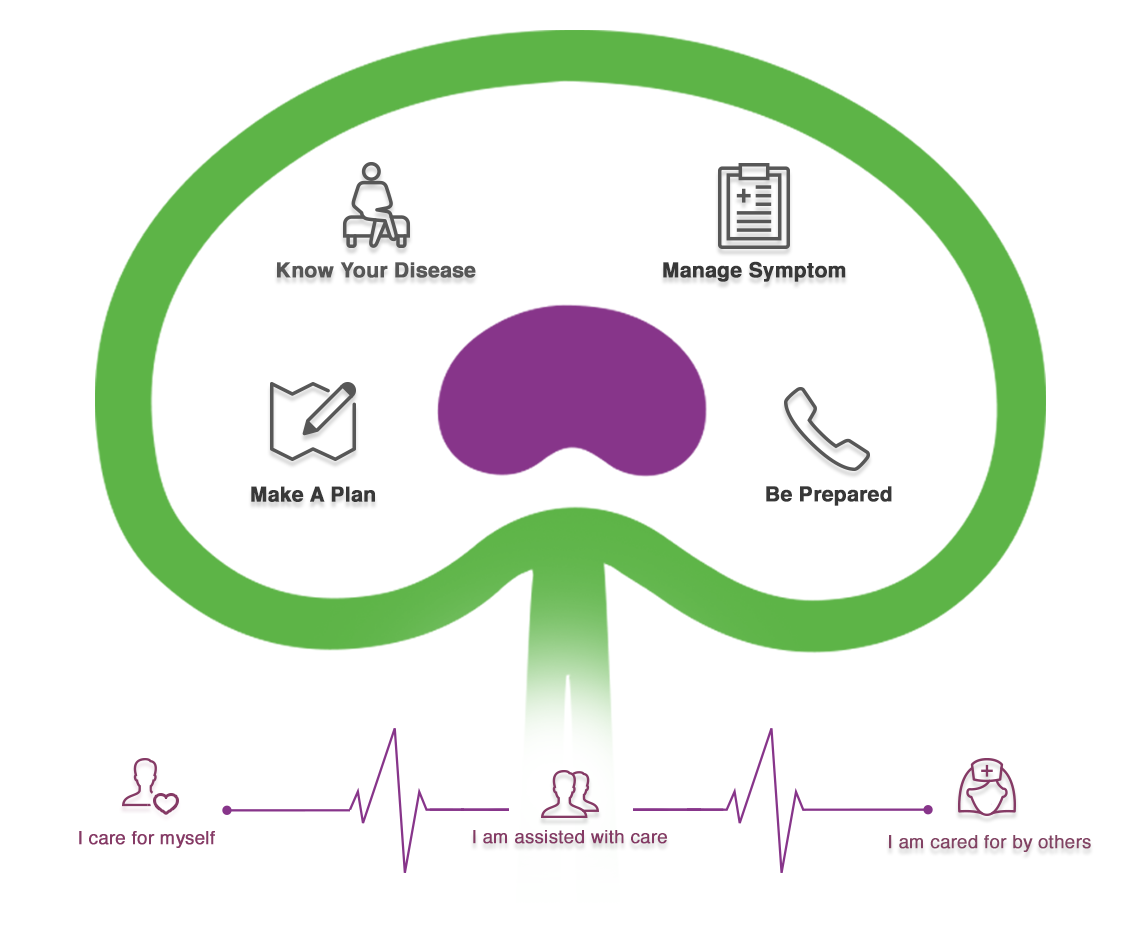Breathlessness
Guiding Priniciple:
Treat the patient's breathlessness if it is affecting their quality of life.
- e.g. anxiety, anemia, infection
- Breathlessness is a subjective discomfort involving the patient’s perceptions and reactions to feeling breathless. It can often be one of the most distressing symptoms of end-stage kidney disease
- The most common cause for breathlessness in this patient population is pulmonary edema.
- Start or increase dose of furosemide (Lasix) (loop diuretic).
- Watch for hypotension and dehydration with decreasing kidney function.
- Consider combination therapy (low-dose metolazone and high-dose oral furosemide (Lasix)).
- Metolazone 2.5 - 5 mg PO in addition to individual‘s furosemide (Lasix) regime up to 120 mg PO BID x 2 - 5 days, then re-evaluate.
- Explore with patient contributing and alleviating factors.
- Sit in an upright position (45°).
- Position by an open window.
- Have a fan blow air gently across the face (stimulation of the trigeminal nerve V2 branch has central inhibitory effects on dyspnea).
- Maintain humidity in room.
- Pursed lip breathing.
- Supplemental oxygen: Provide oxygen and titrate to relieve symptoms rather than to achieve a particular oxygen level.
- Be cautious providing high air flow oxygen to patients with COPD, as the drive for breath depends on their carbon dioxide level.
- Note: the patient must be hypoxic at rest in order to qualify for coverage at home.
- Meditation, mindfulness, music and/or relaxation therapy.
- Provide reassurance.
- Consider referral to dietitian for consultation on fluid and salt management (for volume overload) (See: Sodium/Fluid Statement)
- See: Feeling Short of Breath Patient Handout
Opioids are the most effective drugs for the treatment of breathlessness in end-stage disease. They are safe to use in appropriate doses and are most effective when given orally or by parenteral (subcutaneous or IV) routes. Ensure patient has a laxative regime (See: Constipation Guideline).
Always start with a low dose and titrate slowly to effect.
For shortness of breath that is episodic and primarily associated with a specific activity, consider:
Fentanyl
- 12.5 mcg subcutaneously/sublingually/intravenously q1h PRN
- When used for an opioid naïve patient, start with a low dose on a PRN basis. Due to its fast action, fentanyl works well in cases where breathlessness is predictable. It is a preferred opioid for end stage kidney failure.
For shortness of breath that is more constant or unpredictable in nature, consider:
Hydromorphone (Dilaudid)
- 0.5 - 1.0 mg PO (0.2 mg subcutaneously) q4h around-the-clock and q1h PRN
- Due to the accumulation of metabolites, always start with a low dose and monitor closely for signs of toxicity.
If the patient is already taking an opioid for pain , educate the patient and family that it can also be used for the management of breathlessness.
- Increasing the opioid and/or consider a consult to Palliative Care.



